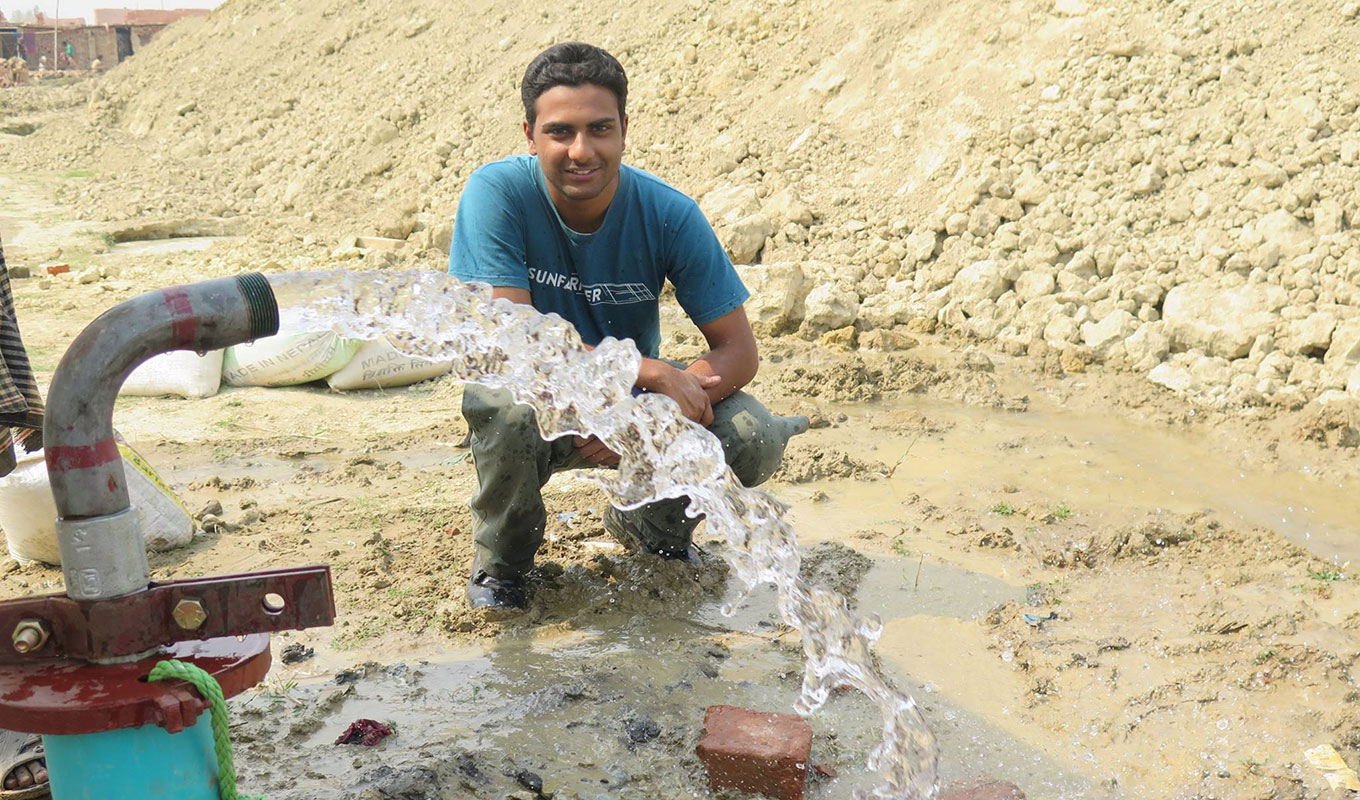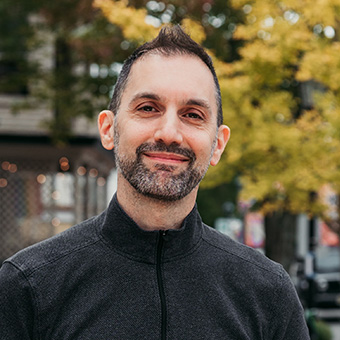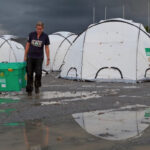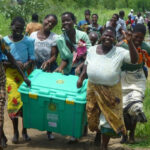
SunFarmer
Podcast: Play in new window | Download
As a young boy growing up in Nepal, Avishek Malla dreamed of being a famous athlete, a cricket champion. His career ended after college, though, and he took on a new passion. He garnered inspiration from carrying out some environmental work in rural areas of his home country, and had a medal bestowed upon him by a king. Today he helps his country’s residents pull power from the sun, and irrigate their once-dry fields. And his work is changing the lives and lifestyles of Nepal’s people.
LINKS:
Full Transcript
Chris Straigis – 0:01
From AAC Studios, welcome to Scrappy, the podcast about small companies doing big things. I’m your host, Chris Straigis. A quick note at the top – we will be off for the next two weeks for the holidays and releasing the last two episodes of this season in early January. Also, we’re in the process of building Season Two, which will be coming out in mid-2020. If you know someone you think would make a good guest for the show, please go to scrappypod.com, click the comment link on the top right and send us a note. We’d love to hear from you.
Chris Straigis – 0:47
Historically, anthropologists have defined four basic human necessities: food, water, shelter, and clothing. By many of today’s standards, you could argue that the list has grown a bit. But the basic premise is that there are certain things that make human life well, effectively livable. In this day and age, many of us in developed societies take these things for granted. We’ve designed and built massive systems that allow us to just turn on a faucet to get water, or flip a switch on the stove to cook food. And we don’t even have to think about where those resources come from. However, there are still so many parts of the world where these core needs can be a struggle to meet. Often, these are also places that are hit hardest by accelerating climate change. And they have very few ways to adapt to it.
Chris Straigis – 1:41
So the big question, how can we take our modern developed technology and put it into places where it’s needed most? Meet Avishek Malla. He runs a company in Nepal that works to provide the infrastructure for several of those basic human needs to be met. with ease, and some of the downstream effects of their work are surprising.
Avishek Malla – 2:06
My name is Avishek Malla, and I’m the CEO of Sunfarmer Nepal. Sunfarmer is a solar energy based social enterprise. It’s located in Kathmandu, Nepal. We have done over 2500 projects in various districts of Nepal of various sizes. We offer three types of services. The first service is a power purchase agreement, where we sign up purchase agreement with clients for systems of various sizes and we sell electricity for an agreed period of time. The second service we provide is turnkey service where we basically work as a EPC, engineering, procurement and construction. And the third service we provide is asset management. In this asset management model, it’s basically like 7we get funds from donor organizations or individual donors. And in their mandate, we execute the project from start to finish.
Chris Straigis – 3:12
Avishek is on a bit of a different path from where he started as a young boy in Nepal. Like many of us, the course of his life took a turn after his college years, some unexpected inspiration from a King helped illuminate that path, and landed him right back home where he started.
Avishek Malla – 3:34
When I was in my childhood, I always wanted to be a cricketer. I had a good career like local career playing cricket. So I was as captain of my university, we won several different tournaments. But, you know, like, in Nepal, I mean, you just cannot earn a living via sports. You know, even when I was doing my bachelor’s degree, I had absolutely no idea, you know, what are we doing? And, and I would never have thought that I’ll be working as a social entrepreneur. Like if I look back 10 years back and you know, after [I] completed my degrees or even though I was doing degrees, but what gave me the vision, the passion and the breakthrough was, was the first job that I did.
Avishek Malla – 4:29
So the first job I did after I left after I completed my graduation was to work in one of the most remotest areas of [the] Nepal homeland. And back then, you know, the nearest road connecting to that area was 16 days walk. The only way you could reach there was by plane, and the flights were very, very irregular and some days would not fly. And there, you know, I caught, you know, I was I was exposed and I got experience in implementing renewable energy technology for not only electricity, but for cooking for for drinking water, you know, for growing food with, you know, passing greenhouse technologies and those kind of things. And, you know, working with the community, you know, working with the technology, you know, it gave me this, it basically taught me that how important you know, a light is, you know, how important the energy is.
Avishek Malla – 5:34
And I was amazed to see like, how much change it can bring to, you know, one’s individual life and the society. So, I was like really thrilled with this holistic kind of approach and I that’s why I never see renewable energy as electron, I never see [renwable] energy producing electricity. I always see what services it’s going provide them and how can you make that service accessible to the, to the people in a in a, you know, in a in a model that is that is sustainable. And that benefits the society for long term. That whole thinking, you know, sort of like that seed was sown when I did that first job and, working there, you know, I was like very sort of like determined that I’m going to do my Masters in [Inari] and I will come back and you know, sort of see how this technology can you know, like, help improve the society. Back then we had we had, we had King, currently we don’t, so the King would, you know, provide gold medal to to the best student that has taught, you know, the whole country in their in their faculty. So I got that award from from the King and, and in that award there was this script that was mentioned, you know, it basically, if I translate it, basically says that, you know, “ones knowledge is not useful, or useless, if it’s not utilized to serve once country.” So that script basically, you know, like made me think and, and again, you know, this work that followed with working in that remote area, it’s sort of like, gave me the direction and passion to, you know, do something for the society with the knowledge I have. So, yeah, definitely, you know, that had, you know, quite deep influence in my life and every day, you know, like when I’m doing a project, I remember this script.
Chris Straigis – 7:55
Nepal is an ancient country. It’s geographically diverse, and home to more than 25 million people. It’s a landlocked region nestled between China and India, and boasts many notable historical features. It’s the birthplace of the Buddha, and home to some of the highest peaks in the world in the Himalayan Mountains. But overall, it’s still behind many parts of the developed world in terms of infrastructure. Today, for example, almost 40% of the population lives off the grid, not connected to the country’s utilities.
Avishek Malla – 8:30
When we started Sunfarmer back in 2014, electricity reliability was a very big problem. There was even, in the urban centers, there was more than 12 hours of power cut every day. You know, solar can be a very potential solution to address this problem, both on the off-grid side and also in the urban side, but the investment cost for installing solar was very high. And there was no financial mechanism at that period of time. And plus the systems that were installed at that time, which is I’m talking about 2014 you know, they were you know, largely smaller systems and you know, there was serious problems with the technical abilities of local technicians to execute quality installations.
Avishek Malla – 9:24
Our priority was to make solar affordable; not only affordable, but also ensuring that high quality work was done during installation and followed by very good operation and maintenance service, because there is no standard as such in Nepal for for good quality installation. I, um, when I started in Australia, there were you know, codes, you know, like standard practice codes and standards for solar installations. But in Nepal that was non existent, which resulted in In you know, non-functional systems over a very short period of time, and that was not creating a very good image of the technology in the country. So, we were addressing, you know, sort of like a holistic problem in the in the sector when we started.
Avishek Malla – 10:15
When we started creating the standard for our own projects and installations, we also, you know, we were also requested by the government body, which is the Alternative Energy Production Center, which is in Nepal, and with them, we created two standards. One was for the institutional solar photovoltaic system, which is basically focusing on the off-grid ruler captive installations. And the other was on on-grid side, so, basically for the focused on the urban centers on you know, grid-connected type of systems. So those two standards, we were very heavily involved in and collaborated with the government and they’re currently, you know, forming their policies and an instruction regulation on on on those documents.
Avishek Malla – 11:16
We have done a lot of projects in birthing centers and they’re, you know, the indicators that we measure is you know, the, the decrease in mortality rate, you know, the numbers of birth that has increased after the system intervention. And if I have to just look at the health sector, the latest number that we have is we have impacted over 1.7 million in terms of population that has no access to health services after intervention. In Nepal, even like you you have, if you have 100 watt solar, you can Just change the birthing center and you can provide, you know, I mean, I think sometimes we take for granted lights. You know, but when I visited some of the rural birthing centers, they told me stories that was you know, very scary. I mean they would put torch light inside their mouth so that their hands are free to deliver the babies, and some actually burn some firewoods for light, or kerosene which I think is absolutely dangerous for a newborn baby. But like 100 watt solar, it’s nothing, you know, it’s nothing. But two or three lights hyper lights, some charge to charge your mobile phone and some charge to work your fetal Doppler, just changes the service of a birthing center.
Chris Straigis – 12:53
For Avishek, the mission was clear and the results of their success stretched far beyond just being able to turn on a light. But in this part of the world, any challenge is magnified,
Avishek Malla – 13:06
You know the geography in Nepal is highly varied from places to places and we have almost you know, like 50% of our country is covered with hills and mountains that creates you know very difficulty in accessibility to these areas, because there are no good way the roads in these areas and sometimes there are no roads. So, it becomes a challenge to, one, is to not only transport the system, but also to you know, to take care of the systems remotely because of, you know, lack of skill, human resource in those areas. So, talking about the transportation side, you know, we have done projects, by carrying the equipment by ourselves, sometimes carrying the equipment on animals. You know chartered helicopters to transfer equipment. So, and you know, sometimes the weather is, especially during the monsoon four months, there’s a lot of landslide flood problem all over the country, which you know adds that extra level of difficulties in terms of logistics and you know supplying this equipments and installing there.
Avishek Malla – 14:24
Nepal is a landlocked country, so we, any of our borders does not touch ocean and the majorimportant is from India and China. But even when we import from China there is the cross-border roads are not very good. So, it has to come through the port of India. And it takes more than, you know, two to three months to get a consignment via China to Nepal through ship.
Avishek Malla – 15:03
When the earthquake struck in 2015, our business you know, just like started slumping down because, you know, probably everybody’s business got affected by the earthquake. And followed after the earthquake, we had, you know, some geopolitical tension between India. So, we are not getting you know supply from the Indian side. So, after the earthquake we were provided, you know, in a consignments of solar panels and other accessories to support earthquake construction activities in Nepal. But our shipment it got stopped in the Calcutta border, which is in India, for eight months. When we were like not having a lot of business, we went to our drawing board and we started thinking like, you know, probably this is a very good time for us to think like, what can we do next?
Chris Straigis – 16:00
Every business is confronted with challenges now and again. And new businesses are especially susceptible to growing pains. The true test of leadership comes in the form of how they face that adversity. And if they can convert it into positive momentum.
Avishek Malla – 16:17
We started thinking that, why can’t we introduce a power purchase agreement on the agriculture sector, which has been so successful on the health sector. So we started exploring that portfolio. And we talked to a bank, we talked to a cooperative on, you know, requesting them to finance the water pumps for farmers. And we faced two challenges. One was the farmers, you know, they were not aware about this technology and they were hesitant to sort of like, adopt. And the other thing was, the banks, also it was new for them. And banks are usually very, you know, very reluctant to go in rural areas to finance very small investment projects unless there is an aggregation of a number of farmers. And the cooperatives also told us that, you know, why don’t you put in your own capital and prove us that it works and then you know, we’ll follow.
Avishek Malla – 17:19
So we coordinated with the cooperative, we did few pilots. We did actually, we did like 27 pilots in one of the area. And, you know, the results were very good, you know, the payment system, we got around 94% repayments in the system, and the farmers were very happy and, you know, they could, you know, it added to, you know, productive use and, you know, helping with their income. So, that’s how we started on the agriculture sector. And now we have, you know, sort of like taking that concept and expanded not only to larger systems for irrigation, but also we recently piloted to community projects where we started thinking, why don’t we you know, do like community projects rather than individuals where we can, you know, amortize the cost over to a larger population and can make the service more affordable and attractive to the farmers. So that’s how we started the water service model in in agriculture. When we have, you know, done sampling and monitoring, we found out that their income has increased by nearly two times. Their nutrition habits has changed because of you know, because of access to more variety of vegetables, which previously they did not have because they’ve not had access to water for integrating the crop. So these are some of the indicators that you know, really are important to us and also our drivers for for you know, like pushing us to more better service.
Avishek Malla – 19:05
One of the pilot projects that we did in agriculture, three years back was a cattle farm. She told me that every day you know, per cattle, she has to carry 25 liters of water from her hand pump to her cattle shed and it’s a it’s a backbreaker and it’s like really difficult for her. So she wants to have this small solar water pump to, you know, to wash her cattle and to provide, you know, water, drinking water for the cattle. So, you know, we signed up an agreement, and we installed the system. After a year when I went there… Before installation, she had four cows. After one year, I went there and I I could see that she has now you know, like, six, seven cattle there. And she told me that due to the hygiene, her calf was also, you know, not suffering from, you know, some disease, I exactly don’t remember what disease she was talking about. And by feeding water regularly and washing them her milk production increased by 20%. So this was I was not expecting all this.
Avishek Malla – 20:27
And then she showed me other things. So she’s a very clever farmer. So she showed me that now, you know, because I have pump, I could water my vegetable gardens, and I could do you know, like, whatever. the manure she is watching from the cattle, she’d made a small cannal, which went to her vegetable garden as a slurry, which was now, you know, not only providing organic fertilizer but also, you know, she was providing water irrigation and she was getting better yields. And I was super surprised because, like, how people can start, you know, thinking about different things that they can do with such a small intervention. And then I went there after, recently, you know, like one year ago, you know, after two years of installation. I was like completely shocked because she started, she registered a cattle company, like a dairy company. She has increased her cattles to 12, and now she is like milk aggregator for the village, you know? All these unexpected things, you know, came up. We were just thinking we’ll give her a pump, I mean, in a ppm basis, and she’ll pay a small fee and then, you know, she could save her hard work and maybe utilize it some other things. But you know, the drastic, economical and social change that had with such a small system was truly, truly amazing. And this is, this is something that, you know, I can, you know, I would never have thought.
Avishek Malla – 22:07
A very recent project that we did you know, we decided to do a community irrigation project. And basically what the project would do is pull water from a river, pump it to to a collection tank and then, you know, distribute it through pipes to to several fields, which is controlled by valve. So, very, very simple project. So, so our design team went there, you know, did all the technical assessments and everything. And then the flood came in and the whole intake was taken by the flood because the river changed this course. Now, this is something that we learned, you know, we didn’t know that the river would change the course, you know? So that that was very good learning for us. In Nepal, everything is virgin, you know? We can adapt to so much technologies and models that have been successful in the developed countries or the developing countries, and contextualize it to Nepal and do so much good here and, you know, what else can you ask for from your profession.
Chris Straigis – 23:32
Sunfarmer’s original mission was simply to bring sustainable electricity to the parts of rural Nepal that needed it most. What they ended up doing was changing the lives and lifestyles of the recipients in ways they couldn’t have imagined. From safer and higher birth rates to better nutrition to rural farmers creating sustainable businesses of their own. Avishek and his team are changing the world, one installation at a time. You can go to scrappypod.com for show notes, transcripts and links to Sunfarmer. And remember, if you know someone who might make a good guest for the next season, please go to scrappypod.com, click the comment link on the top right, and send us a note. Or you can just let us know what you think of the show. Happy Holidays!



